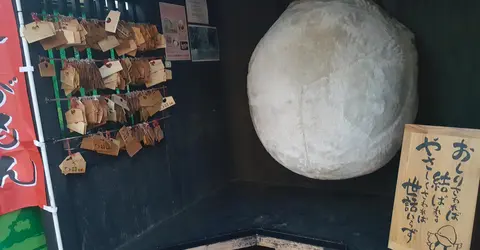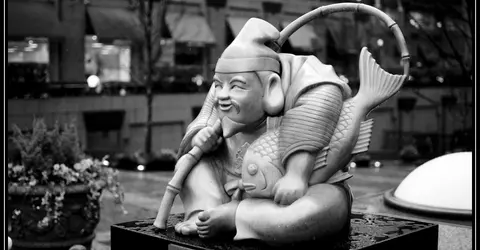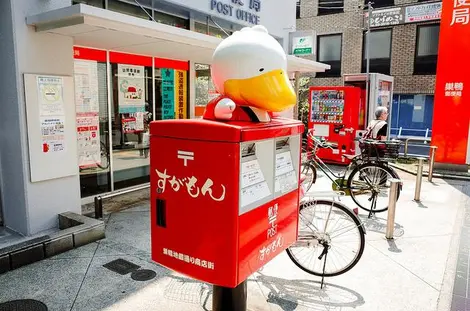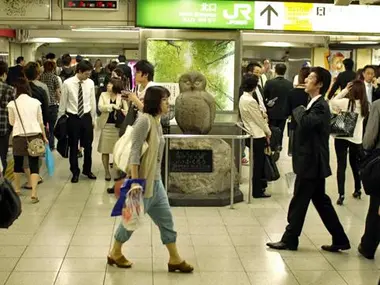Top 5 Yamanote mascots

Hachiko, one of Yamanote's mascots
flick/treneuroni
Gods and animals
With its stops that serve many districts, each more popular than the next, the Yamanote is an essential line in Tokyo for getting around. But it is also a very good means of transportation to meet the mascots of the stations, familiar figures very popular with Tokyoites!
1. Sugamon(Sugamo)
Sugamon is a little white duck who takes his name from the neighborhood where he is the mascot: Sugamo. As an effigy of the place, it is then found everywhere in the Jizôdori, the shopping street which extends the station.
On the storefronts, in the souvenir shops of the district, and even near the Buddhist temple of Sugamo where he keeps company with the many statues of jizô (divinity sharpened with the children) who are there, he is a real emblem for the residents. And maybe even more, since the little duck would be the origin of a funny legend...
Indeed, at the entrance to the shopping street is a small hut housing… Sugamon's stuffed buttocks! A particular totem that would have certain ''virtues'', since whoever touched them would encounter Great Love within a year.
The legend does not say if there have already been proven cases of "miracles" in the neighborhood, but the fact remains that many people come every day to touch the buttocks of the little duck with both hands in the hope to meet the person who is destined for them.
Singles in 2019, why not come and try your luck for 2020?

Sugamon's ''butt''
Ph.L
2. Ikefukuro (Ikebukuro)
Since the end of the Second World War (1939-1945), owls have been a symbol of good luck in the district that houses the second busiest station in the capital, Ikebukuro.
This is why you will see many statues in their likeness if you look closely!
Nicknamed ''Ikefukuro'' (a play on words between the name of the station Ikebukuro and the word "fukurô" meaning ''owl'' in Japanese), the statues are spread all over the district. And especially at the north exit of the station, which has since been a popular meeting place.
3. Hachiko (Shibuya)
Hachiko is Yamanote's most popular mascot.
Paying homage to the dog Hachiko having waited for his master at the exit of Shibuya station until his death in 1935 after the latter had died of a stroke at work ten years earlier. The Hachiko statue has been an unmissable symbol of the district since it was erected near the station in 1934.
Today it is a cult spot that travelers do not hesitate to take a picture of when they pass through Shibuya, and where many people meet every day before going for a walk in the very lively streets of the district.
4. The Ebisu Deity (Ebisu)
Gods of fishermen, traders, and prosperity, Ebisu is one of the 7th lucky gods that we usually come to honor at New Year. Commonly associated with food and money, it's no wonder this deity has given its name to one of Yamanote's hippest neighborhoods.
Finally, very popular in the evening, the Ebisu district pays perfect homage to the god who protects it. The temples were then dedicated to him, as were its shopping streets which housed bars, restaurants, and other shops whose prosperity left no doubt as to the divine origin of the protection they enjoyed.

The Ebisu deity in the district that bears his name
Flick/yokosojapan
5. Panda(Ueno)
Real stars of the zoo where they have been tenants since 2011, the pandas of Ueno have quite naturally become the mascots of the district. They can be found both in souvenir shops and as decorations on the desserts of restaurants in the area, and several statues bearing their effigy are placed everywhere in the streets of the district.
The real pandas themselves continue to attract hundreds of visitors a day, and events honoring them are even organized every year in businesses located near the zoo.

The stars of Ueno
Flick/ Dakiny




































